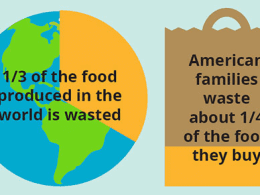Introduction:
Food waste has become a global crisis, with significant environmental, economic, and social implications. According to the Food and Agriculture Organization of the United Nations, approximately one-third of all food produced for human consumption is wasted each year. To make a real difference in combating this issue, it is crucial to address the root causes of food waste. In this article, we delve into the battle against food waste and explore the steps necessary to create a more sustainable and efficient food system.
- Redefining Food Standards and Beauty Standards:
One of the primary contributors to food waste is the stringent standards imposed on produce appearance. Consumers have been conditioned to expect flawless fruits and vegetables, leading to the rejection and discarding of “imperfect” or “ugly” produce by farmers and retailers. By redefining food standards and challenging beauty norms, we can reduce the amount of perfectly edible food that goes to waste. Initiatives such as “ugly produce” campaigns and partnerships with supermarkets can help shift consumer attitudes and promote the consumption of aesthetically imperfect but nutritionally valuable produce.
- Improving Supply Chain Efficiency:
Addressing food waste requires a collaborative effort across the entire supply chain. Farmers, distributors, retailers, and consumers all play vital roles. By improving supply chain efficiency, we can minimize losses and maximize the use of available resources. Implementing better inventory management, optimizing transportation logistics, and establishing partnerships between farmers and retailers can reduce spoilage and ensure that food reaches consumers in a timely manner.
- Implementing Sustainable Packaging Solutions:
Excessive packaging and poor packaging design contribute to food waste. Packaging materials, such as plastic, often end up in landfills and contribute to environmental degradation. By implementing sustainable packaging solutions, such as compostable or recyclable materials, we can reduce the environmental impact and encourage responsible disposal. Additionally, innovative packaging technologies that extend the shelf life of perishable goods can help reduce food waste throughout the distribution process.
- Educating and Empowering Consumers:
Educating consumers about the impact of food waste and providing them with practical tips can significantly contribute to reducing waste at the household level. Promoting meal planning, proper storage techniques, and creative ways to use leftovers can empower individuals to make informed choices and minimize food waste. Public awareness campaigns, educational programs in schools, and online resources can play a vital role in disseminating knowledge and fostering behavior change.
- Supporting Food Recovery Initiatives:
Food recovery initiatives, such as food banks and redistribution programs, play a crucial role in redirecting surplus food to those in need. By supporting and expanding these initiatives, we can minimize food waste while addressing food insecurity. Collaboration between food businesses, nonprofit organizations, and government agencies can help streamline food recovery efforts and ensure that surplus food is efficiently redirected to those who can benefit from it.
- Embracing Technology and Innovation:
Advancements in technology offer promising solutions to tackle food waste. From smart inventory management systems that optimize stock rotation to apps that connect consumers with discounted surplus food, technology can help bridge the gap between supply and demand. Additionally, innovations in food preservation techniques, such as cold chain storage, can extend the shelf life of perishable items and reduce waste.
Conclusion:
The battle against food waste requires a multifaceted approach that addresses the root causes of waste at every stage of the food system. By redefining food standards, improving supply chain efficiency, implementing sustainable packaging solutions, educating consumers, supporting food recovery initiatives, and embracing technology, we can make significant strides towards a more sustainable and efficient food system. By working together and taking action at all levels, we can make a real difference in reducing food waste and building a more resilient future for generations to come.












